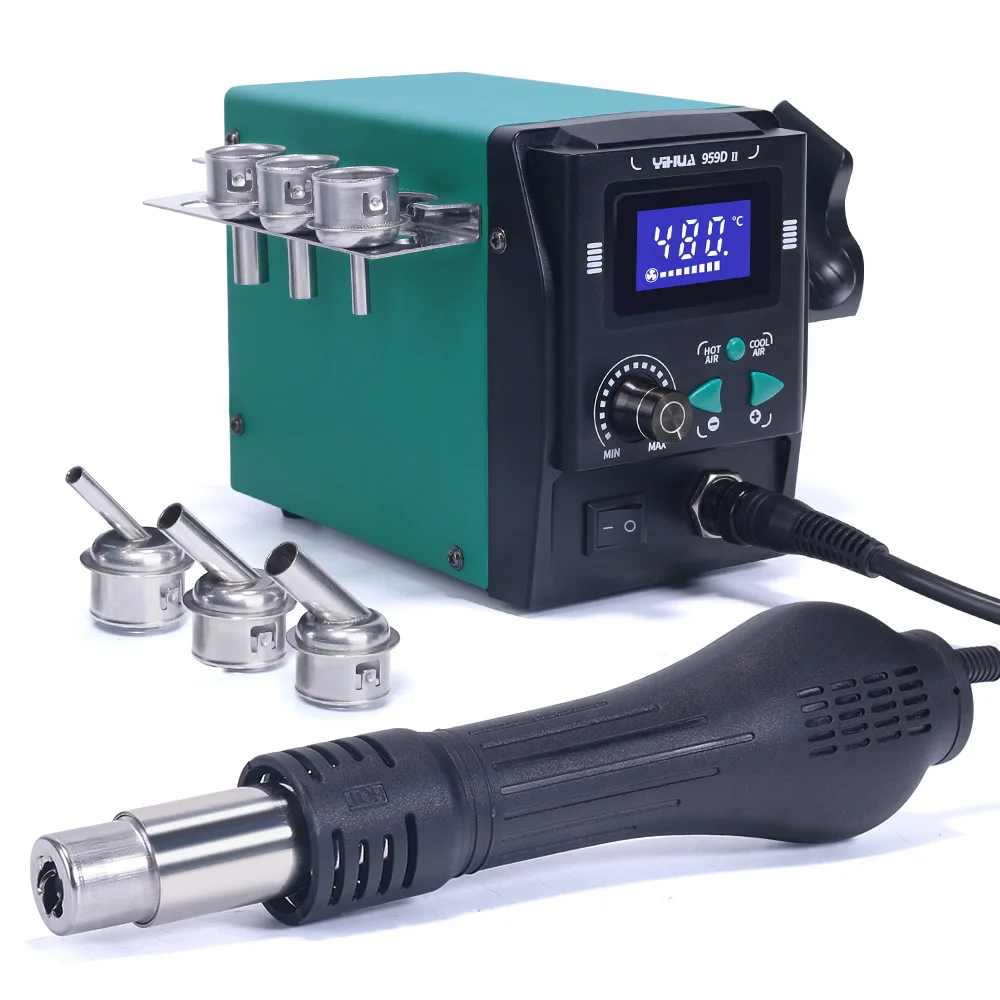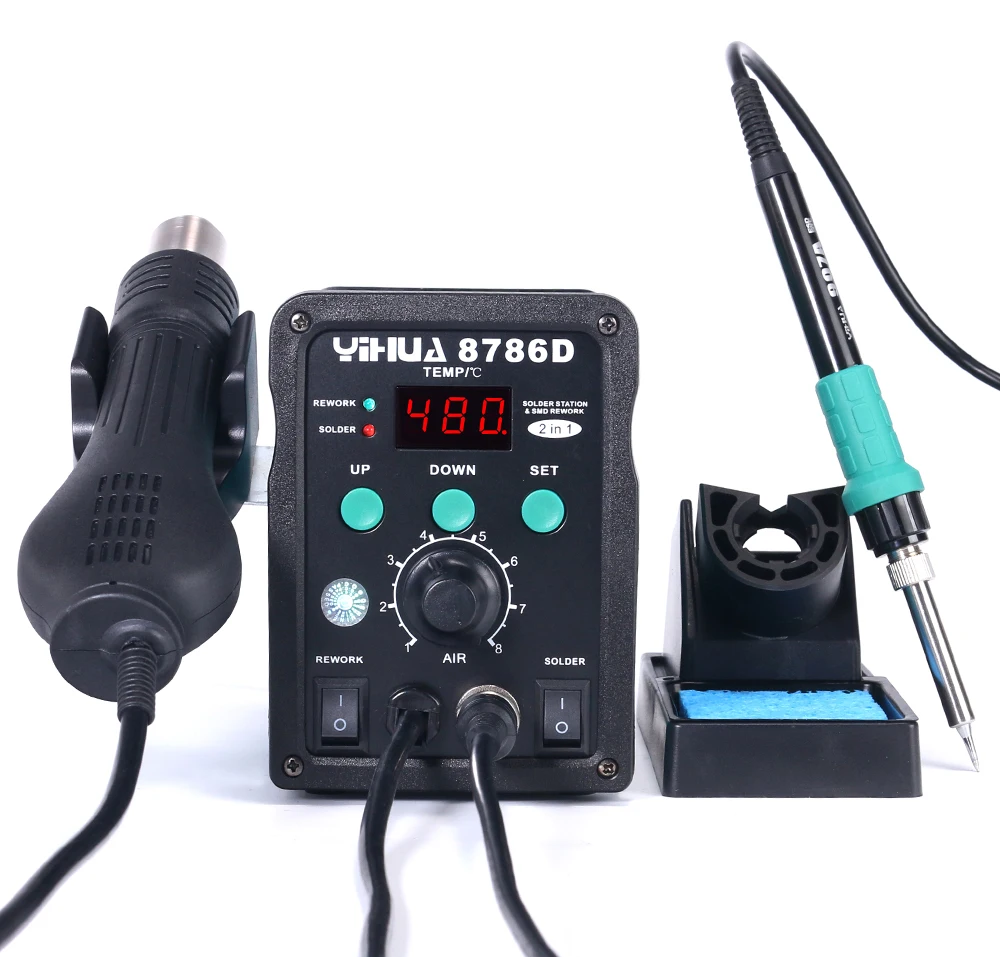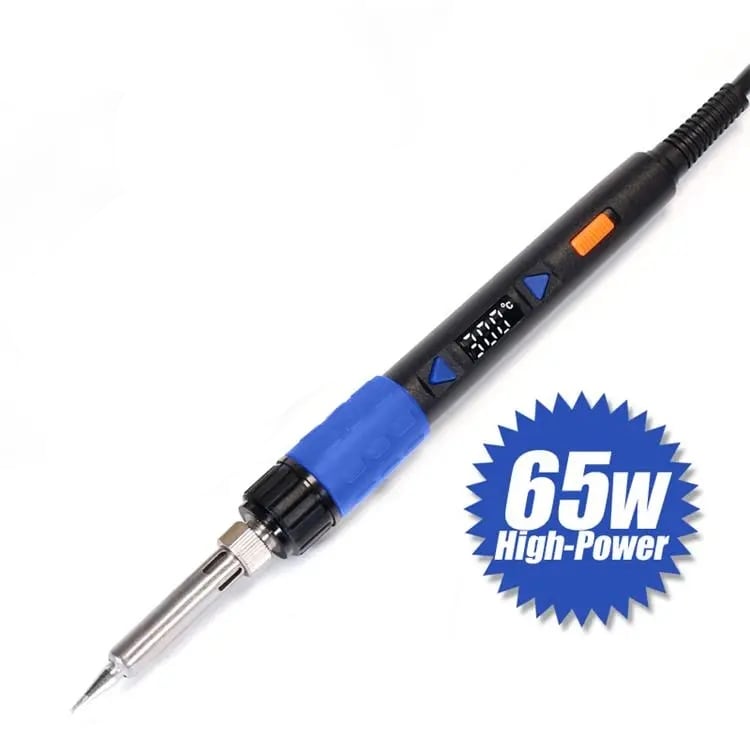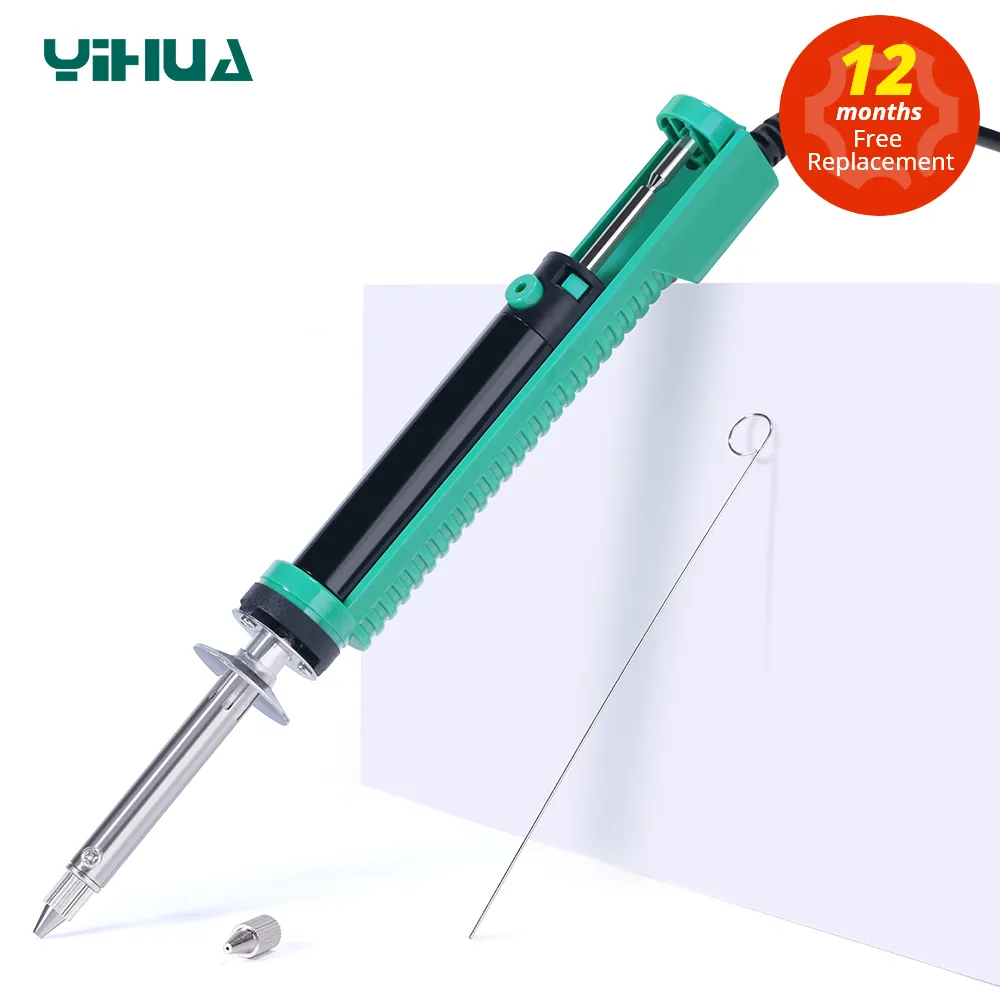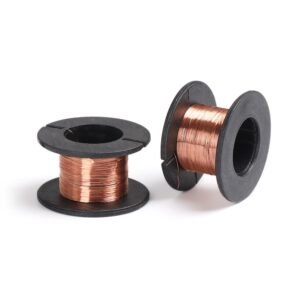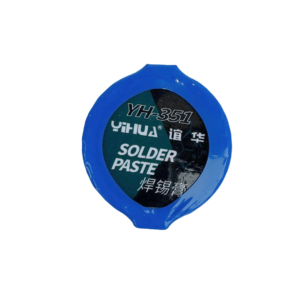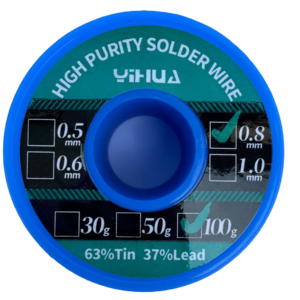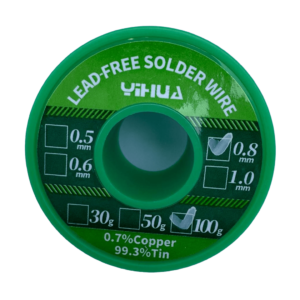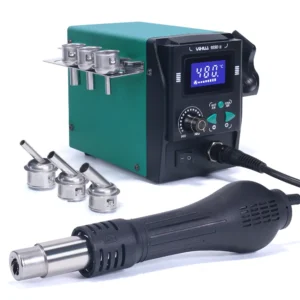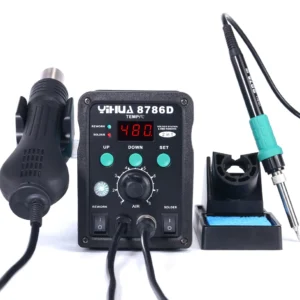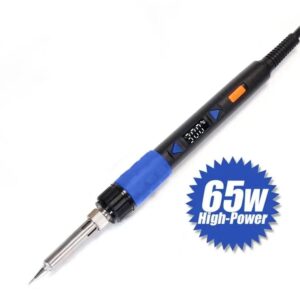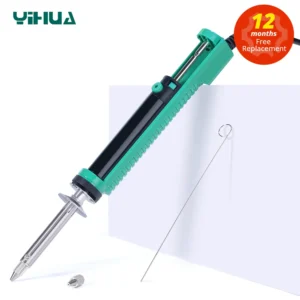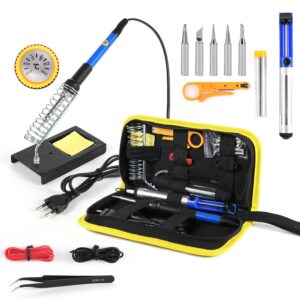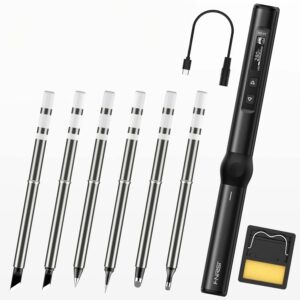Desoldering braid is an essential tool for anyone involved in electronics repair, providing a simple yet effective solution for removing unwanted solder from circuit boards.
This article explores the fundamentals of desoldering braid, how it works, and its numerous benefits, including ease of use and cost-effectiveness.
It also discusses the necessary tools, common mistakes to avoid, and tips on choosing the right braid for your projects.
By the end, you’ll understand why desoldering braid is a must-have in your repair toolkit.
What Is Desoldering Braid?
Desoldering braid, also known as soldering wick, is a vital tool in the electronics repair process, designed specifically for the effective removal of solder from circuit boards and electronic components.
It is made of fine copper wire, which absorbs molten solder through capillary action when heated, making it ideal for DIY enthusiasts and professional technicians alike.
This technique is essential for maintaining high-quality results in soldering projects, allowing for precise soldering practices without damaging critical components.
How Does Desoldering Braid Work?
Desoldering braid works by utilising thermal dissipation and capillary action to remove solder effectively from solder joints on circuit boards or various electronic components. When placed on a heated solder joint, the solder wicks into the braid, allowing for precise and clean solder removal without damaging the surrounding materials.
The mechanism behind its operation is quite fascinating, as it relies heavily on the principles of heat transfer and material interaction. When the user applies a soldering iron to the braid resting on the joint, the heat emanating from the iron softens the solder, making it malleable.
This is where the concept of thermal dissipation comes into play; as the solder liquefies, it is drawn into the braid through capillary action, aided by the porous composition of the material. Proper heat control is crucial because excessive heat can damage sensitive electronic components, whereas insufficient heat may leave solder residues.
- The braid’s composition typically includes copper strands to enhance conductivity.
- It is vital to remove the braid promptly after the solder has been absorbed to prevent re-solidification.
Understanding these mechanics not only makes for effective desoldering but also contributes to maintaining the integrity of the circuit boards involved.
What Are the Benefits of Using Desoldering Braid?
Using desoldering braid offers numerous benefits for electronics repair, making it a preferred choice among DIY enthusiasts and professionals.
First, it allows for the easy removal of solder without the risk of damaging delicate components, ensuring that solder joints can be repaired or replaced with high quality solder. Additionally, desoldering braid is a cost-effective solution compared to other desoldering tools, providing high efficiency in the soldering process while maintaining optimal results.
Easy Removal of Solder
One of the primary advantages of using desoldering braid is the ease with which it facilitates solder removal from circuit boards and electronic components.
This product not only minimises the hassle typically associated with solder removal but also provides a cleaner finish, which is essential for maintaining the integrity of sensitive electronic components. Unlike traditional methods such as soldering pumps, which can sometimes be cumbersome and less effective, desoldering braid offers a more straightforward and efficient option.
- The braid is composed of fine copper strands that absorb molten solder, allowing for a precise and mess-free extraction.
- It requires no complicated mechanics, making it accessible for both beginners and experienced technicians alike.
- Its compact design means it can easily fit into tight spaces, enhancing its usability in various circuit board layouts.
The effectiveness of desoldering braid not only streamlines the process but also significantly reduces the risk of damaging delicate components during disassembly.
Prevents Damage to Components
Using desoldering braid helps prevent damage to delicate electronic components during the solder removal process.
The gentle nature of this braid significantly reduces the risk of thermal damage that can occur when using traditional solder removal techniques. By effectively wicking away solder without the need for aggressive heat application, it minimises mechanical stress on the circuitry. This is particularly important for sensitive components such as capacitors or multi-layer boards, which can be adversely affected by high temperatures.
- Soldering Process:
- Carefully lifts solder from the joint
- Maintains structural integrity of components
Therefore, electronic enthusiasts and professionals alike should consider incorporating this method into their toolkit for a safer and more effective approach to soldering.
Cost-effective Solution
Desoldering braid is a cost-effective solution for both hobbyists and professionals involved in soldering projects.
When considering the myriad of tools available for solder removal, many find that desoldering braid stands out not only in price but also in its undeniable effectiveness. Unlike bulkier or more specialised devices such as solder suckers or heat guns, this simple yet versatile material is readily accessible in most electronic supply shops and online platforms.
Its ease of use makes it especially favourable among beginners who appreciate a straightforward approach to correcting soldering mistakes.
- Affordable pricing allows for wider adoption.
- Compact size ensures portability and ease of storage.
- Eliminates the need for more complicated, expensive tools.
Whether tackling a home project or a more demanding professional task, desoldering braid provides a reliable, user-friendly option that effectively meets diverse soldering needs.
What Tools Are Needed for Using Desoldering Braid?
To effectively use desoldering braid for solder removal, several essential tools are required, including a high-quality soldering iron, flux, and the desoldering braid itself.
Each of these tools plays a critical role in ensuring that the soldering process is efficient and produces high-quality results.
Desoldering Braid
Desoldering braid, or soldering wick, is the primary tool used to absorb solder during the desoldering process.
This handy tool consists of a thin, braided copper wire that effectively draws in molten solder due to capillary action, making it an essential companion for electronic repair enthusiasts and professionals alike. The effectiveness of desoldering braid varies based on its type and specifications.
- Standard Wick: Ideal for basic operations, it is frequently used in simple circuit repairs.
- Lead-Free Wick: As the name suggests, this variant is designed for use with lead-free solder, adhering to modern environmental standards.
- Fine Braid: Perfect for precision work, its compact design allows for effective solder removal even in tight spaces.
Choosing the right desoldering braid not only enhances efficiency but also prevents damage to surrounding components, ensuring a clean and effective desoldering experience.
Soldering Iron
A soldering iron is essential for applying the necessary heat to solder joints, enabling the effective use of desoldering braid.
Regarding optimising the performance of electronic repairs or installations, the selection of an appropriate soldering iron is paramount.
Factors such as heat control and precision play a crucial role in achieving successful results. A well-chosen soldering iron allows the user to make adjustments to the temperature settings, which in turn aids in avoiding damage to sensitive components.
Precision tips provide better access to tight spaces, ensuring that soldering can be performed efficiently without risk of bridging connections or creating cold joints.
When integrating these tools and techniques, practitioners not only improve their craftsmanship but also enhance the longevity and reliability of their projects.
Flux
Flux is a vital accessory used in conjunction with desoldering braid to enhance the solder removal process.
When applied, flux serves multiple functions that significantly impact both thermal dissipation and solder joint quality. It minimises the oxidation of surfaces, which is crucial when heat is applied; without oxidation, the solder can flow more freely and be absorbed by the desoldering braid.
By promoting a cleaner interface, flux ensures that any residual solder is effectively removed, leading to reliable solder joint quality on subsequent re-application. Properly chosen flux can enhance the wetting properties of the solder, allowing for a smoother desoldering process. This smooth action not only improves thermal conductivity but also prevents damage to sensitive electronic components.
Incorporating flux during desoldering not only eases the removal of solder but also enhances the integrity of the entire electronic assembly, ensuring long-lasting performance.
How to Use Desoldering Braid for Electronics Repair?
Using desoldering braid for electronics repair involves a systematic process that ensures efficient solder removal from solder joints while safeguarding the integrity of the components involved.
By following a series of well-defined steps, technicians can achieve optimal results without incurring damage to the circuit board.
Prepare the Area
The first step in using desoldering braid is to prepare the area by ensuring that the workspace is clean and free from any obstructions.
This foundational stage not only boosts efficiency but also prioritises safety. A clutter-free workspace minimises distractions and decreases the risk of accidents, which is critical when dealing with sensitive electronic components.
To further enhance this preparation, consider implementing the following safety measures:
- Always wear safety glasses to protect your eyes from solder splashes.
- Use an anti-static wrist strap to prevent static electricity from damaging components.
- Keep a fire extinguisher nearby, particularly when soldering, to handle any unforeseen incidents.
Organising tools and components systematically not only speeds up the repair process but also ensures that everything needed is at hand, reducing the likelihood of errors.
Heat the Solder Joint
Next, apply heat to the solder joint using a soldering iron to ensure that the solder becomes molten and can be effectively absorbed by the desoldering braid.
When applying heat, it is crucial to utilise a soldering iron with an appropriate wattage, typically between 20 and 60 watts, to achieve optimal thermal dissipation for proper solder flow. Effective thermal regulation not only expedites the melting process but also prevents damage to surrounding components and pads. Take care to position the soldering iron tip directly onto the solder joint, allowing a few seconds for the heat to penetrate and soften the solder, ensuring a cleaner removal.
- Ensure the soldering iron tip is clean and well-tinned before use.
- Maintain a steady hand to control the heat application accurately.
- Observe the solder as it turns shiny, indicating it is ready to be absorbed.
Remember, efficiency in this technique enhances the success rate of the soldering project and minimises potential rework costs.
Place the Desoldering Braid
Once the solder joint is heated, place the desoldering braid over the molten solder and press down gently with the soldering iron.
For optimal results, it is crucial to ensure that the desoldering braid is adequately positioned to absorb the solder effectively. Begin by selecting a suitable length of braid and allowing it to lie flat on the joint without any twists or folds.
As you apply the soldering iron, the heat will transfer through the braid, causing the solder to be drawn into the copper strands. It is advisable to hold the soldering iron in contact for a brief moment—generally around 2-4 seconds—enabling the solder to flow into the braid. Once this is done, quickly remove the braid from the surface along with the excess solder.
- Make sure to periodically change the braid, as reusable lengths will become saturated with solder over time.
- Using a magnifying glass can greatly assist in ensuring precision when working with small components.
With some practice, mastering this technique will lead to cleaner boards and efficiency in your desoldering tasks.
Remove the Braid
After a brief moment, lift the soldering iron and remove the desoldering braid, which should now contain the absorbed solder, effectively clearing the area where the joint once was, making it ready for inspection and further work.
Once you have carefully lifted the braid, take a moment to examine the solder joint meticulously. It is crucial to ensure that there are no remnants of solder left on the pads, as this can affect future connections. Use a magnifying glass if necessary to scrutinise the joint closely.
- Check for any residue from the solder that might have been left behind.
- Inspect the cleanliness of the pad area to ensure it is free from debris.
- Verify that the exposed pad is intact and not damaged during the desoldering process.
In case you notice any leftover solder, you might need to repeat the process or use a solder sucker for additional cleaning. A pristine solder joint will not only improve the reliability of future soldering tasks but also contribute to the longevity of the component in use.
Clean the Area
Clean the area around the solder joint to ensure no residual solder or flux remains, which could affect the performance of the circuit. Proper cleaning is essential for maintaining the integrity and efficiency of electronic components.
When soldering work is complete, it is vital to attend to cleaning with utmost care. Residual solder and flux can cause issues such as electrical shorts, corrosion, or unreliable connections. The best approach involves using isopropyl alcohol, a soft brush, and lint-free wipes for effective removal.
- Isopropyl Alcohol: This solvent excels in dissolving flux residues.
- Soft Brush: A gentle brush helps reach into tight spaces without causing damage.
- Lint-free Wipes: These help ensure that no fibres remain that could interfere with the circuit.
After thoroughly cleaning, it is advisable to inspect the area visually to confirm that it is free from any contaminants. By following these cleaning practices, the longevity and functionality of the circuit can be significantly improved.
What Are the Common Mistakes When Using Desoldering Braid?
When using desoldering braid, several common mistakes can hinder the effectiveness of the solder removal process, leading to soldering errors that may damage electronic components.
Understanding these pitfalls is crucial for achieving high-quality results in soldering projects.
Using the Wrong Size Braid
One significant mistake is using the wrong size desoldering braid, which can lead to ineffective solder removal and potential damage to components.
When working on intricate electronic circuits, selecting the appropriate size braid is essential for achieving optimal desoldering performance.
Using the correct braid width ensures that heat is effectively transferred from the solder joint into the wick, allowing for faster and more thorough absorption of solder. For instance, if a technician uses a narrow braid on a connection that requires a broader one, it might struggle to extract the solder adequately, which can result in leftover solder on pads or tracks.
- Using a 2mm braid for larger joints can be significantly more efficient.
- Conversely, for delicate components, a 1mm braid is typically recommended.
Ensuring that the braid is matched correctly not only enhances the solder removal process but also minimises the risk of heat damage to sensitive circuitry.
Not Applying Enough Heat
Failing to apply sufficient heat to the solder joint is another common mistake that can prevent the solder from melting properly.
Proper heat application is crucial because it ensures that the solder flows seamlessly, creating a strong and reliable connection between the components. Insufficient heat can lead to cold joints, which are weak and may fail over time.
To achieve optimal heat levels, consider the following tips:
- Use a soldering iron with adjustable temperature settings to tailor the heat according to the type of solder being used.
- Allow the soldering iron tip to reach the desired temperature before making contact with the joint.
- Maintain consistent contact between the soldering iron and the joint until the solder visibly melts and flows.
By applying these techniques thoughtfully, one can enhance the effectiveness of soldering tasks, ultimately leading to stronger, more durable connections.
Not Using Flux
Another mistake is neglecting to use flux, which significantly enhances the ability of the desoldering braid to absorb solder.
Regarding soldering and desoldering processes, the importance of flux cannot be overstated. It serves as a cleansing agent, removing oxidation and enabling a strong bond between the metal surfaces involved. Without flux, the process may result in an inadequate flow of solder, leading to weak joints that are prone to failure.
- By improving heat transfer, flux ensures that the solder melts evenly.
- It also helps to avoid the formation of cold solder joints.
In short, incorporating this essential material into the workflow not only enhances performance but also guarantees better long-term reliability of the connections made. Failure to use flux properly can result in a multitude of issues, complicating future repairs or modifications and ultimately diminishing the overall quality of the electrical connections.
Not Cleaning the Area After Use
Neglecting to clean the area after using desoldering braid can result in residual flux or solder, impairing future solder connections.
It is crucial to understand that even small remnants left behind can lead to issues like weak joints or electrical shorts, ultimately affecting the performance of the entire circuit. This is where effective cleaning comes into play. Cleaning is not just an afterthought; it is an essential final step in the soldering process.
- Many experts recommend using isopropyl alcohol as it evaporates quickly and effectively removes flux residues.
- A soft brush or lint-free cloth can further assist in ensuring that the area is thoroughly cleaned.
- For more stubborn residues, a specialised flux remover may be necessary to achieve optimal results.
Incorporating these techniques not only improves the quality of your soldering work but also prolongs the life of your electronic components.
How to Choose the Right Desoldering Braid for Your Needs?
Choosing the right desoldering braid for your needs is essential for ensuring effective solder removal in your soldering projects. Factors such as braid width, solder types, and soldering techniques come into play when selecting the most suitable option.
Regarding choosing the ideal desoldering braid, there are several key criteria to consider that contribute significantly to the overall effectiveness of solder removal. The braid width plays a crucial role, as it determines how much solder can be absorbed during the desoldering process. Typically, a wider braid is better suited for larger solder joints, while narrower options excel in more precise applications.
- Material: The material of the braid is equally important; copper is a popular choice due to its excellent thermal conductivity.
- Thickness: This can impact how quickly the braid can wick away the solder, so keep an eye out for specifications that indicate thickness.
- Flux: Some braids come pre-fluxed, allowing for better solder absorption and less heat application time.
By understanding these specifications, you can make informed decisions that enhance the efficiency of your soldering projects.
Conclusion: The Importance of Desoldering Braid in Electronics Repair
Desoldering braid plays a crucial role in electronics repair, providing a reliable and effective method for solder removal that ensures high soldering quality.
For DIY enthusiasts and professionals alike, understanding and properly utilising desoldering braid is key to achieving success in soldering projects. This tool not only simplifies the process of cleaning up excess solder but also significantly reduces the risk of damaging sensitive components on a circuit board.
By effectively absorbing molten solder, desoldering braid minimizes the chances of short circuits and improves the overall reliability of electronic repairs. It enables users to rectify mistakes more efficiently, leading to increased productivity in both hobbyist and professional environments.
Consider the following points:
- Efficiency: Faster removal of solder compared to traditional methods.
- Precision: Allows for careful work on delicate components.
- Cost-effectiveness: An economical choice for repeated use in various projects.
In the realm of electronics, mastering the use of this essential tool can greatly enhance repair skills and outcomes, making it an essential asset in every technician’s toolkit.
Frequently Asked Questions
What is the role of desoldering braid in electronics repair?
Desoldering braid is used in electronics repair to remove excess or unwanted solder from circuit boards and components. It acts as a wick, absorbing the molten solder and allowing for easy removal.
How does desoldering braid benefit the repair process?
Desoldering braid helps ensure a clean and efficient repair by removing excess solder, which can cause connection issues or shorts. It also allows for easier removal and replacement of components.
Can any type of desoldering braid be used for electronics repair?
No, it is important to use a desoldering braid specifically designed for electronics repair. These braids are made with materials that can withstand high temperatures and have a flux core to help remove the solder.
What are some tips for effectively using desoldering braid in electronics repair?
It is important to choose the right size desoldering braid for the job. The braid should be slightly wider than the component being removed. Additionally, using flux on the braid can help improve its effectiveness.
What should I do if the desoldering braid is not removing all of the solder?
If the desoldering braid is not completely removing the solder, it could be due to a few factors. First, make sure the braid is making good contact with the solder. If that is not the issue, try adding some extra flux to the braid or using a higher temperature soldering iron.
How should I store desoldering braid to ensure its effectiveness?
Desoldering braid should be stored in a cool, dry place to prevent it from becoming brittle. It is also important to keep it away from any moisture, as this can affect its ability to remove solder effectively.


